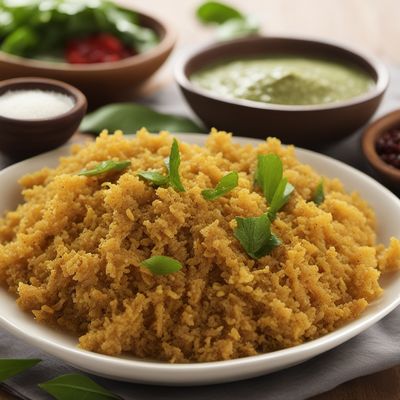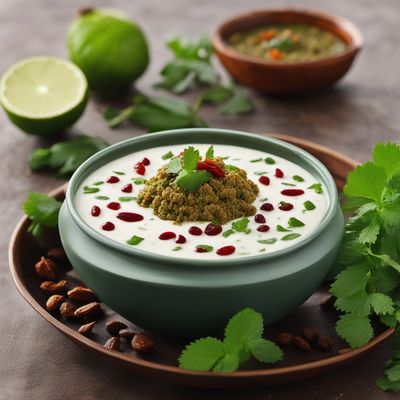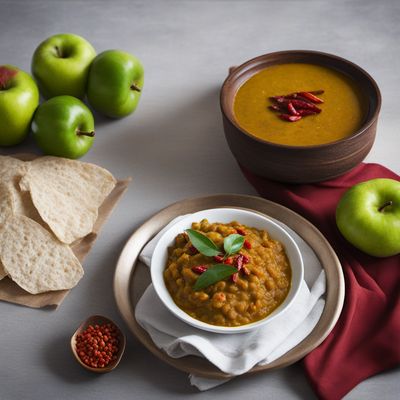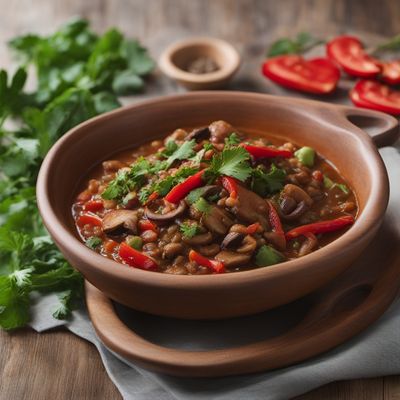
Ingredient
Black gram (dry seeds)
The Mighty Black Gram: A Nutrient-Packed Legume
Black gram is a small, black-skinned legume with a creamy white interior. It has a slightly nutty and earthy flavor, along with a soft and buttery texture when cooked. It is commonly used in various dishes such as curries, soups, stews, and savory pancakes.
Origins and history
Black gram has been cultivated in the Indian subcontinent for thousands of years and holds great cultural and culinary significance in Indian cuisine. It is believed to have originated in the southern part of the Indian subcontinent and has been an integral part of traditional Indian cooking. Today, it is widely consumed in India and other parts of South Asia.
Nutritional information
Black gram is a nutritional powerhouse, rich in protein, dietary fiber, iron, and other essential minerals. It is also low in fat and cholesterol, making it a healthy choice for individuals following a balanced diet. Additionally, it provides a good source of energy due to its carbohydrate content.
Allergens
Black gram does not contain any known allergens. However, individuals with legume allergies should exercise caution and consult with a healthcare professional if unsure.
How to select
When selecting black gram, look for clean, unbroken, and uniformly sized seeds. Avoid any discolored or damaged seeds, as they may indicate poor quality or infestation. Opt for organic or locally sourced black gram whenever possible to support sustainable farming practices and ensure freshness.
Storage recommendations
To maintain the freshness and quality of black gram, store it in an airtight container in a cool, dry place. Avoid exposure to moisture or direct sunlight, as it can lead to spoilage or loss of flavor. Cooked black gram can be stored in the refrigerator for up to 3-4 days.
How to produce
Black gram can be grown at home by soaking the seeds overnight and then planting them in well-drained soil. It requires warm temperatures and regular watering. With proper care and maintenance, black gram plants can be harvested within a few months.
Preparation tips
Black gram can be used in a variety of dishes and cooking techniques. It is commonly used to prepare dal (lentil) dishes, such as dal makhani or sambar. It can also be ground into flour and used to make savory pancakes or fritters. Additionally, black gram can be sprouted and added to salads or used as a filling in dosas (Indian crepes).
Culinary uses
Black gram is a staple ingredient in Indian cuisine, where it is used to prepare a wide range of dishes. It is commonly used to make dal (lentil) dishes, soups, stews, and curries. It is also a key component in popular Indian snacks like vada (fried lentil fritters) and idli (steamed rice and lentil cakes).
Availability
Black gram is primarily cultivated in India, particularly in the states of Uttar Pradesh, Madhya Pradesh, and Punjab. It is also grown in other parts of South Asia, including Pakistan and Bangladesh.
More ingredients from this category

Bambara groundnut (dry seeds)
The Hidden Gem of Legumes

Horse gram (dry seeds)
The Nutritional Powerhouse: Horse Gram

Tepary bean (dry seeds)
The Ancient Bean of the Desert

Kersting's groundnut (dry seeds)
The Nutty Delight: Exploring the World of Kersting's Groundnut

Mat bean (dry seeds)
The Mighty Mat Bean: A Protein-Packed Legume
Recipes using Black gram (dry seeds) » Browse all

Udupi-style Crispelle with Coconut Chutney
Savory Udupi Delight: Crispelle with a Coconut Twist

Dahi Vada with a Twist
Creamy Delights: Dahi Vada with a Flavorful Twist

Handvo - Savory Lentil Cake
Spiced Lentil Delight: Handvo - A Flavorful Indian Lentil Cake

Matcha Soba Uppuma
Green Tea Soba Uppuma: A Fusion of Japanese and South Indian Flavors

Apple Pachadi
Tangy and Sweet Apple Pachadi: A Telugu Delight

Vegan Brazilian-inspired Squid Feijoada
Oceanic Delight: Vegan Feijoada with a Seafood Twist

Refreshing Curd Rice - A Delightful Twist to Pakhala
Curd Rice: A Cool and Creamy Delight for Your Palate

Coconut Rice
Exotic Coconut Delight

Mıcırık aşı with a South American Twist
Spicy Black Bean and Quinoa Stew: A South American Twist on Mıcırık Aşı

Gibraltarian-inspired Spinach and Cheese Stuffed Pancakes
Savory Delight: Gibraltarian Spinach and Cheese Pancakes

Swedish Black Soup
Midnight Delight: A Savory Swedish Black Soup

Kodava-style Spicy Onion Chutney
Fiery Flavors of Kodava: Spicy Onion Chutney